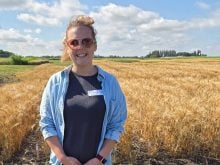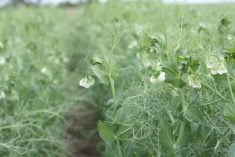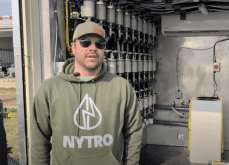Legislation governing environmental social and governance disclosure could change the way sustainability is measured
Environmental, social and governance frameworks are becoming the standard for measuring climate costs and successes.
As Canadian producers face climate change, agriculture is being incorporated, directly and indirectly, into the world of ESG disclosure.
That involves providing data on risks an operation faces across the three fields. As new disclosure standards begin to affect Canadian businesses and farms, many challenges remain for producers — and perhaps benefits as well.
Read Also

Farmers asked to keep an eye out for space junk
Farmers and landowners east of Saskatoon are asked to watch for possible debris in their fields after the re-entry of a satellite in late September.
Bill C-59, which took effect in June 2024, aims to hold corporations accountable for greenwashing, or making environmental claims without proof to support them. Canadian Sustainability Disclosure Standards are also moving forward, with potential new rules soon coming into effect.
The Canadian Sustainability Standards Board expects to soon release its first standards after receiving feedback from nearly 600 individuals and 400 organizations across Canada.
Globally, countries use the framework of the International Sustainability Standards Board (ISSB), which creates a global baseline.
In Canada, the board is moving to implement these universal standards in industries. Interim chair Bruce Marchand said it will try to align with the ISSB’s baseline and also examine aspects specific to the Canadian context.
Marchand said there is a strong financial demand for adopting sustainability disclosure practices. Investors and financers who use financial statements to make decisions recognize that sustainability risks are often financial risks.
Now, they’re looking for more information.
“There’s a recognition, both by investors, lenders, et cetera, and by the companies that report, that it would be helpful to have a standard,” he said.
Having a “baseline of reporting would be helpful to … converge those into an international standard that’s accepted worldwide, so that companies are not reporting under different standards.”
Nick Betts, managing director of the Canadian Alliance for Net-Zero Agri-Food, said ESG standards have more consumer-facing potential than other sustainability policies.
“One of the differences with something like ESG versus other policies, specifically when you’re talking about things like environmental outcomes, whether it be carbon, water, biodiversity, those pieces there, typically we have frameworks set up because there’s less transparency in the supply chain. There’s less trust from a consumer.
“As consumers get farther away from a farm, we know less and less about where the food comes from. Therefore, we need someone else to tell us how to do that, or what’s happening, or how it works.
“The whole point of that ESG framework is to build that trust.”
This also has potential to change the way Canadians view on-farm success. Betts said ESG frameworks tie profitability and sustainability closely together.
“It is a measure of business health. It’s a measure of the success and profitability of my business because most likely, my bottom line is going down and my production is going up.
Tyler McCann, managing director of the Canadian Agri-Food Policy Institute, said farming operations will remain successful as long as they are efficient.
“I think success will always come back for farmers to … how are we building farms and farm businesses that are environmentally sustainable, but also economically sustainable?” he said.
“We have been increasingly successful in finding ways to balance that environmental sustainability and the economic sustainability.”
However, collecting and using data is a major barrier for producers.
“What’s changed is we now need the data to show it, and it’s not just enough to say … ‘I’ve, you know, put the moldboard plow away, and I’m using no-till cropping systems instead.’ It’s how can you actually measure and assess the carbon emissions from your farm?
“That ‘show me’ piece is a big part of what will be different for farmers going forward.”
For some producers, integrating disclosure standards may not require changes to their practices, but it will mean showing the data to prove their sustainability.
Marchand said many producers likely have access to the stats but may not know how to integrate them.
“A lot of the time the data is there, like it’s within your invoices,” he said. “For fuel, for example, you know, you can have volumes within existing invoices, your own accounting records.
“It may look a little more daunting than it actually turns out to be once you get into it.”
Another challenge will be the burden of proof, McCann said.
“What if you are being asked to produce data that you don’t see a clear value proposition on your own farm for?
“What kind of support is there going to be from extension services, from governments, from your financial institutions?”
Once that data is accessible, though, McCann said the benefits will appear.
“Better data should mean better decisions, right? Farmers will likely have access to a lot more information about the business that they’re running, the financial and environmental impacts of that business, and likely should be able to make better business decisions at the end of the day.”
Marchand said access to data and an understanding of ESG standards will provide Canadian producers with two main benefits.
“One, it provides … a standard that they can report to that’s credible and that would be accepted widely.”
Second, “they will know that when their competition in other countries are reporting on their sustainability profile, the playing field will be even.”
Solid proof of an operation’s sustainability may also drive demand and loyalty. Marchand said producers will only derive this benefit if they report to a reputable standard like the ISSB.
Education on disclosure is a gap in the process, but bridging that gap will see farmers able to reach their full potential on sustainability, he added.
“The only way to benefit from the market differentiation that comes with … talking about your cleaner profile is to get that information out.”


















